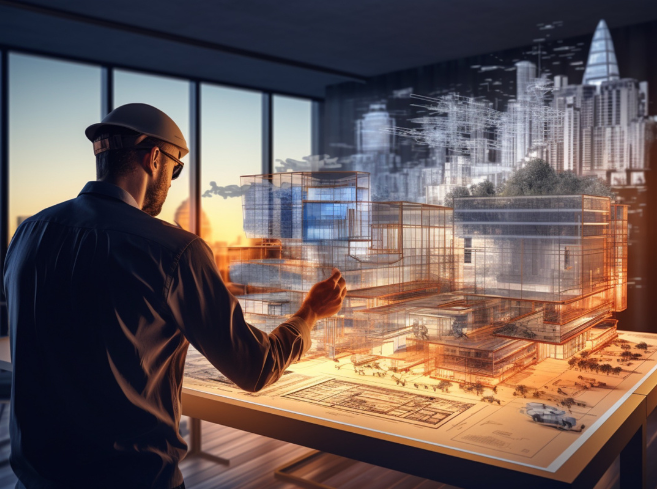As new innovative technologies are introduced, the construction industry is going through multiple changes in its project planning and execution processes. Technology is making the construction projects safer, faster and more efficient than ever. It doesn’t matter what kind of a project it is - whether AI-driven project management or robotic automation on job sites - everything related to this industry is shifting at a faster pace. In this blog, we will look into the 11 influential construction technology trends which are going to build the future of this industry.
AI and Machine Learning-Powered Construction Management
AI is literally changing every industry, and the construction industry is no exception. By making use of AI-driven analytics, many activities in construction industry like risk assessment, cost estimation, and workflow optimization can be done easily. Predictive analytics will be continuously improved with machine learning algorithms, which companies can use to prevent project delays and reduce costly mistakes. AI will play an important role in every stage of construction, from design to post-construction maintenance.
Robotics and Automation on the Job Site
As we all know, AI can be our best assistant. In construction sites, robots are being used to assist workers for improving efficiency and safety. Autonomous construction robots can handle repetitive tasks like bricklaying, welding, and material transport, which speeds up the timelines while reducing human labor strain. We will see more robotic arms, drones, and autonomous vehicles assisting with everything from excavation to final assembly in the coming years.
3D Printing for On-Demand Construction
Traditional construction methods are not in demand anymore as 3D printing has made the creation of building components or even entire structures faster and cheaper. It also helps in reducing the waste and shortening the project timelines by making precise, sustainable, and customizable designs. There will be more 3D-printed houses, bridges, and even skyscrapers in sight soon.
Digital Twin Technology
Construction project requires constant monitoring of progress and to make this happen, digital twin technology will give you a real-time digital replica of your construction project for tracking development, detecting potential issues, and optimizing efficiency. Project managers will be able to track and improve performance through the creation of a virtual model of a physical structure, which can result in better decisions that reduce risks and improve project outcomes.
Augmented Reality (AR) and Virtual Reality (VR) for Immersive Planning
Back in the day, we were only using blueprints and 2D scans. Nowadays, AR and VR technologies help architects, engineers, and stakeholders walk through virtual models before breaking ground, which increases design accuracy, organizes collaboration, and improves client communication.
Modular and Prefabricated Construction
Building parts are made in a factory and put together on-site. This makes construction faster and with fewer mistakes. Modular construction will keep growing in 2025, especially for homes, hospitals, and offices where saving both time and money is important.
Advanced Building Materials
Construction materials are getting better. Self-healing concrete, aerogel insulation, and carbon-fiber composites are some examples of new materials that make buildings stronger and more sustainable. They also help save energy and protect the environment.
Sustainable and Green Construction Tech
As the industry moves towards sustainability, green building technologies are becoming more important. Solar windows and energy-efficient HVAC systems are examples of eco-friendly solutions being used more often. Net-zero buildings—those that produce as much energy as they use—will be a big trend in 2025.
Construction Drones for Site Monitoring and Safety
Drones are now must-haves for site monitoring, surveying, and safety checks. With high-resolution cameras and LiDAR, they give real-time data to help project managers track progress, spot hazards, and increase efficiency. In 2025, drone use in construction will keep growing, which improves project oversight.
Blockchain for Secure and Transparent Transactions
Blockchain is changing construction contracts and supply chains by making them secure, transparent, and efficient. Smart contracts on blockchain prevent disputes, speed up payments, and improve accountability. As more companies use blockchain, expect fewer delays and cost overruns due to financial mismanagement.
Exoskeletons for Worker Safety and Efficiency
Wearable robotic exoskeletons will be a game-changer for construction workers. These powered suits boost strength and endurance, reducing fatigue and injury risks. For tasks like lifting heavy materials and repetitive work, exoskeletons will improve productivity and safety.

